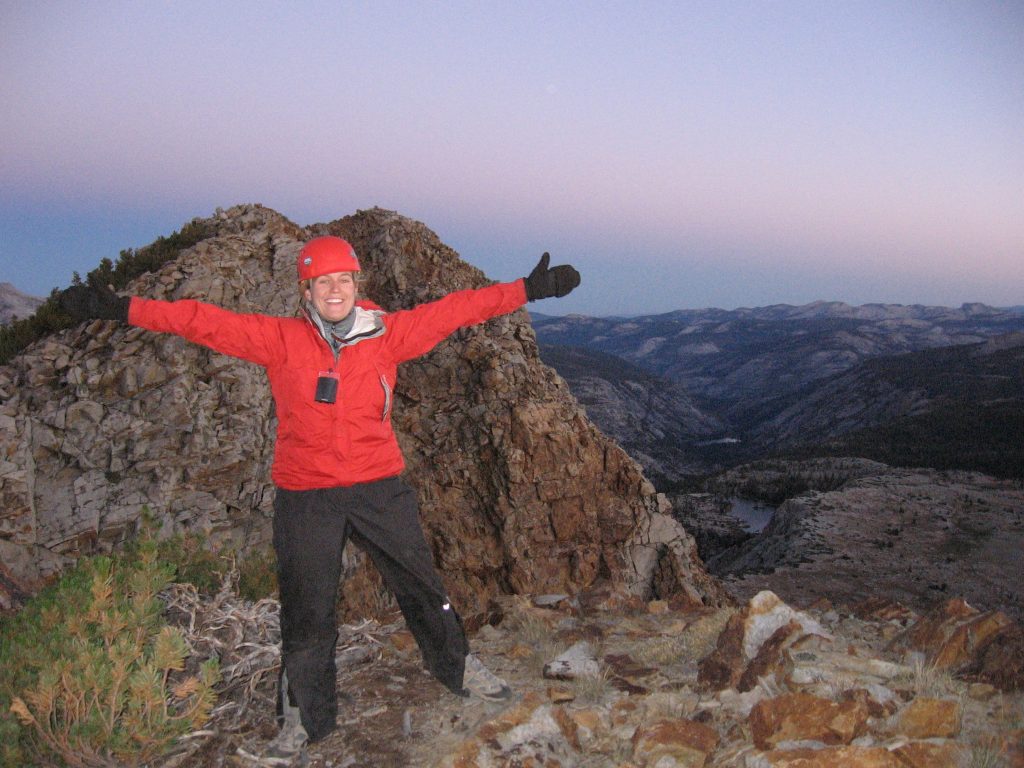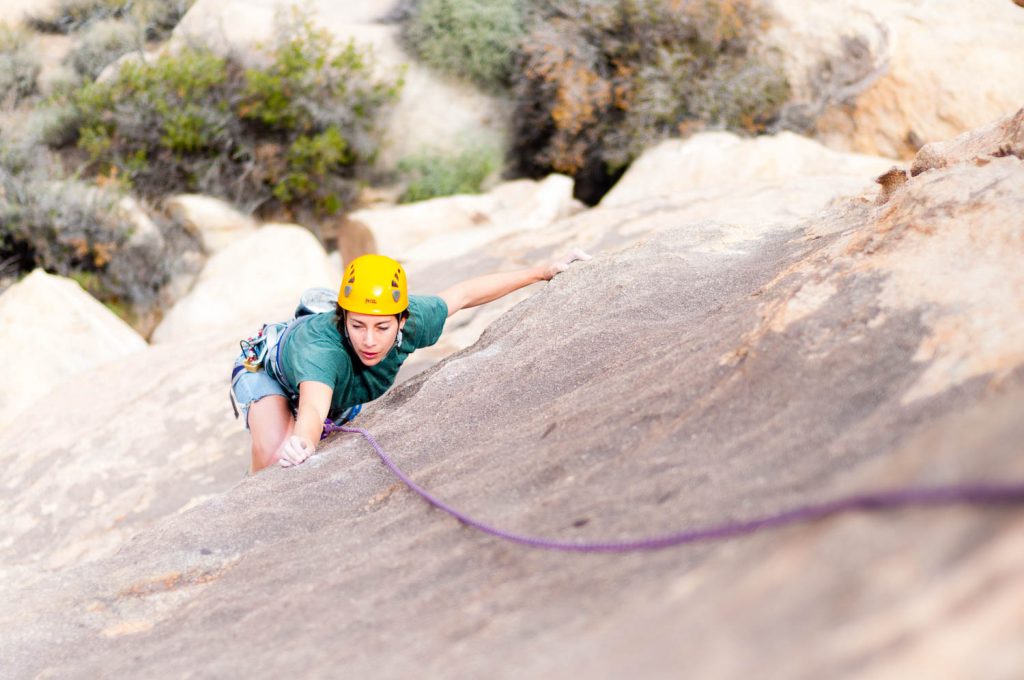Late in an already long day, at the mouth of a narrow, rock-lined chute clogged with snow at 9,000 feet, I coached two friends on where to place their feet. The three of us were picking our way down to a campsite on the banks of an alpine lake that we had identified hours before but simply couldn’t seem to get to. My friends had some practice in navigation, but we realized too late that I had the most experience. Too nervous or too passive to voice any concerns earlier in the day, I allowed us to make a number of unfortunate navigational mistakes we had only just corrected. What’s done is done, though, I thought. I pinpointed our location on the map, explained the route I thought was best, and my friends agreed. The way forward was clear, and although we gripped granite on a hairy scramble down, my heart was steady. I had a plan; the sky was wide, we still had hours to work with, and I made us all stop to eat dried mango and chocolate. After that, we finished our descent and set up well-deserved hammocks on the water.

Compare this situation to last Memorial Day weekend when I tried to buy a plant with my mom. Similarly, mistakes were made—like going to a greenhouse on a holiday at the start of planting season, for one. But my corporeal existence wasn’t in peril. I didn’t risk my own well-being or the mortal safety of my loved ones.
I was out-of-my-mind stressed.
I flagged down one of the more patient looking employees to help. She took me on a tour of an entire aisle packed with greenery that felt 10 miles long. Fine, yes, good, hundreds of options, I thought, and figured I’d decide on the plant later. I wandered over to the aisle for pots and planters. The shelves were stacked high—floor to greenhouse ceiling—with every size, shape, color, price and reduced-price option. I stared for a long time, touched one pot, took my hand away, picked up another, put it back. In that time, the entire greenhouse emptied out. Suddenly, I turned around hoping to consult my mother and found one of the nursery employees instead. “We’re closed,” he said. My neck got hot. My heart-rate spiked. Deep, black, uncontrollable panic settled over my brain like a nice wool blanket on a hot day. Thankfully, from somewhere among the rhododendrons and sansevierias, my mom emerged carrying a low-light fern and two other starter plants, grabbed three tasteful pots and steered me to the register. She becomes a magical machine in high pressure, high-choice situations. I become a puddle.
Stress Looks Different to Everyone
Stress isn’t necessarily about risk or even about high versus low stakes. A lot of people become trapped thinking stress belongs to the realm of CEOs, executives, those who face stakes in which money, ego or safety are on the line. We forget about stress in everyday situations. We forget that stress, more often than not, has to do with situational dynamics and that the perfect storm of stressors looks different for every person.

Leader of the day giving a navigation briefing to the group before launching in the San Juan Islands. Photo by Joel Reid.
During orientation week for my first season at Outward Bound, our group of incoming logistics coordinators took a personality test. We split into color-coded groups and went over our personality quirks with people in our category. It was a helpful exercise, but it didn’t hit home until the full group came back together. The lead Instructor addressed each personality type and talked not only about what each type might do well, but what they generally do poorly—situations in which they might become a puddle, and why, and how we—as co-workers—could step up to relieve puddle-inducing stress.
Seek Out Experiences to Minimize Stress
For myself, I recognize now that choice isn’t my friend. After years of tests—both the real world and the paper kind—I consistently fall into the category of mediator, which means I tend to see all sides of an issue. I prefer collaborative decision-making and a clear way forward, like on the mountain with my friends. When those elements start to break down, or when I have too many options, not enough information and too little time to weigh the pros and cons, I become frustrated and very snippy.
How you manage stress has everything to do with being able to recognize your own personal stressors. The catch is that most people are very adept at avoiding stress and discomfort. This might sound like a good thing but it also means we rarely learn how to cope in productive ways. Instead, we control our environments, whether consciously or unconsciously, to stay out of stressful situations as best we can, until we can’t. And then, when we can’t, we become maladaptive monsters who shout at our mothers and crumple up in tears on a greenhouse floor.
That was a real possibility on that Memorial Day weekend, but it didn’t happen because I make a point to push myself in other areas of my life. There is truly no discovery without challenge. As counterintuitive as it may seem, intentionally seeking out stressful experiences is the best way to minimize stress. It allows for the opportunity to learn what makes you tick and what makes you explode, and how best to direct such energy in a productive manner.

Photo by Rikki Dunn
For myself, pursuing that kind of challenge hasn’t only benefited me, but my relationships with friends, family, co-workers and everyone in-between. Whether navigating a mountain or the mundane, I’m much stronger for taking the time and effort to manage my stress rather than avoid it.
What are your personal stressors, and how do you manage them? What kinds of experiences have you had lately to figure that out?
About the Author
Kate is a logistics coordinator for the Rocky Mountain Program at the Colorado Outward Bound School in Leadville, Colorado. She holds an MFA from the University of Montana and currently splits her time between working in the high country and relaxing in Denver, where she walks her sister’s dog and eats her parents’ food.
OTHER POSTS YOU MAY LIKE
Read More
Read More
Read More




